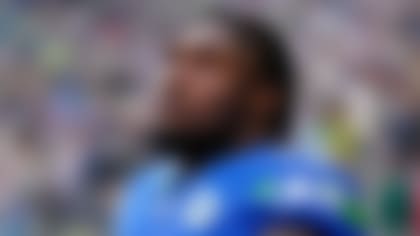There must be something in the water at the offices of the New England Patriots, because their trio of 30-something running backs has seemingly discovered a fountain of youth.
Fred Taylor, Sammy Morris and Kevin Faulk are defying conventional wisdom to anchor the Patriots' dynamic offense.
Last week, the aging group showcased their collective talents in a 38-24 dismantling of the Cincinnati Bengals, combining for 149 yards from scrimmage. The Patriots venerable trio keyed a workmanlike effort that featured an assortment of hard-nosed runs that set the tone of the teams sledgehammer attack.
Though the unit doesn't boast a featured runner, Taylor has stepped to the forefront to spearhead the Patriots' running game. The 34-year old looked surprisingly spry during the preseason, and he continued to display that explosiveness in Week 1. He rushed for 71 yards on only 14 carries (5.1 per carry average) and popped off a 24-yard run that showed he still has some fuel left in the tank.
When Taylor isn't pounding away at the interior of the defense, Faulk is running defenders ragged with his jaunts on the perimeter. Although most of his touches come in the passing game, his deceptive quickness and elusiveness make him a tough cover in the open field. The Patriots take advantage of those skills by routinely getting him the ball on screens and checkdowns in the open field. While Faulk will occasionally get a touch on a draw or delay, he is quietly one of the Patriots' biggest difference-makers.
Lost amid the stellar play of Taylor and Faulk are the key contributions of Morris. The 11th-year pro is a versatile back with the skills to fill a multitude of roles in the Patriots' diverse scheme. Morris is currently their short-yardage specialist. He gives them a big, physical back to pound between the tackles against eight- and nine-man fronts. In addition, he is nimble enough to shoulder some of the workload as a third-down back.
The Jets will need to stop the venerable trio to slow down the New England juggernaut.
While that strategy is sound in principle, the loss of Kris Jenkins threatens to cripple the Jets' run defense. The four-time Pro Bowler was a mountain in the middle of the line, and his ability to take on double teams at the point of attack freed the linebackers to aggressively fill lanes. Without Jenkins in the line up, the onus falls to Sinoe Pouha to control the point of attack.
He filled in admirably when Jenkins got hurt in Week 6 last season, and his solid play keyed the Jets' No. 1 finish in total defense. Although the shift to nose tackle from defensive end robs the team of some size upfront, the versatility of Pouha and Mike DeVito could prompt Rex Ryan to use more 4-3 fronts against the Patriots.
DeVito has experience playing as the nose tackle and under tackle in New York's four-man fronts. He could slide inside and allow Ryan to use another defensive end to shore up the edges in the running game. In addition, the use of more four-man fronts will force the Patriots to prepare for more exotic looks from the Jets.
Most of the speculation leading up to this bitter contest has centered on Randy Moss' intention to flee Revis Island, but the deciding factor could hinge on the production of the Patriots' venerable trio of rushers.
To blitz or not to blitz?
That is the question that haunts Jim Schwartz and the Detroit Lions as they prepare to face Michael Vick this weekend.
Defending a dynamic athletic quarterback with incomparable skills poses a significant challenge.
The eighth-year pro is the only quarterback in league history to rush for 1,000 yards in a single season, and his exceptional running skills have keyed three top-rated rushing attacks during his career. As a dynamic runner with outstanding speed and quickness, Vick's explosiveness rivals some of the league's top running backs and receivers. He routinely outruns defenders around the corner and flashes outstanding elusiveness in the open field.
While Vick remains a work in progress as a pocket passer, he possesses a strong arm and throws the ball with pinpoint accuracy when he keeps his footwork and mechanics in order. However, he has failed to put his fundamentals into practice on a consistent basis, and his mediocre career completion percentage is reflective of his ongoing struggles. Although he has shown better timing, anticipation and awareness since working with Andy Reid and Marty Mornhinweg in Philadelphia, he remains an inconsistent passer incapable of stringing together a series of completions.
Given that scouting report on Vick's game, it is obvious that it's in the Lions' best interest to make him beat them as a passer. Although his scintillating performance against the Packers suggests he could be capable of winning with his arm at this stage of his career, it still ranks as the weakest part of his game, and he must prove that he can do it against complex coverages designed to test his decision-making skills.
When they choose to attack Vick, the Lions must decide whether to be aggressive or conservative in their approach.
If the Lions opt to aggressively attack Vick in the way that their defensive coordinator, Gunther Cunningham, typically prefers, you can expect to see a host of blitzes off the edges. In bringing pressure off the edges, the defense is hoping to keep Vick contained in the pocket to prevent him from using his legs to create big plays outside of the pocket. The defense will send most of the rushers from the offensive left to keep Vick from being a dual threat when he eludes the rush (quarterbacks have a tough time throwing accurately when rolling away from their strong side, so bringing pressure from their front side limits their effectiveness on the run).
The downfall of using a tactical approach that features a lot of blitzing is the potential big plays that could result if Vick escapes.
With that in mind, it is quite possible that the Lions will use an assortment of zone coverage with a four-man rush. Kyle Vanden Bosch, Ndamukong Suh, Corey Williams, and Turk McBride had success getting to Jay Cutler last week, and that kind of pressure would allow the rest of the Lions' defenders to keep their eyes on Vick while executing their drops. If the Lions only rush four, they must make sure that the outside rushers dont fly too far up the field, and create open running lanes for Vick. The interior tandem of Suh and Williams must also generate a push up the middle to discourage Vick from fleeing up the gut.
The Packers spent most of the second half dealing with the nightmare of the Michael Vick Experience, but a week of preparation for the encounter could prevent the Lions from experiencing a similar fate.
Adjustment time for Chargers
If it is true about the NFL being a copycat league, then the San Diego Chargers need to quickly come up with a strategy to counter the double team tactics that the Kansas City Chiefs used to neutralize Antonio Gates in Week 1.
Kansas City used an array of bracket and double coverage, including a version of a vice double team that is typically used on punt return teams to neutralize the outside gunners. The Chiefs closely aligned two defenders over the six-time Pro Bowler at the line, and they mauled him upon the snap to prevent him from working up the field with an unimpeded release. The unconventional tactic was a critical factor in San Diego's inability to get the ball to Gates with the game on the line in the waning minutes.
Malcolm Floyd, Legedu Naanee and Buster Davis faced single coverage for most of the game, and the Chiefs were content to let them pile up big numbers without committing extra defenders in their direction.
Given their struggles finding a rhythm against the Gates double team, the Chargers must find a way to effectively move the football with or without their top weapon being a major factor in the game plan.




